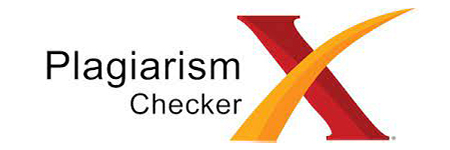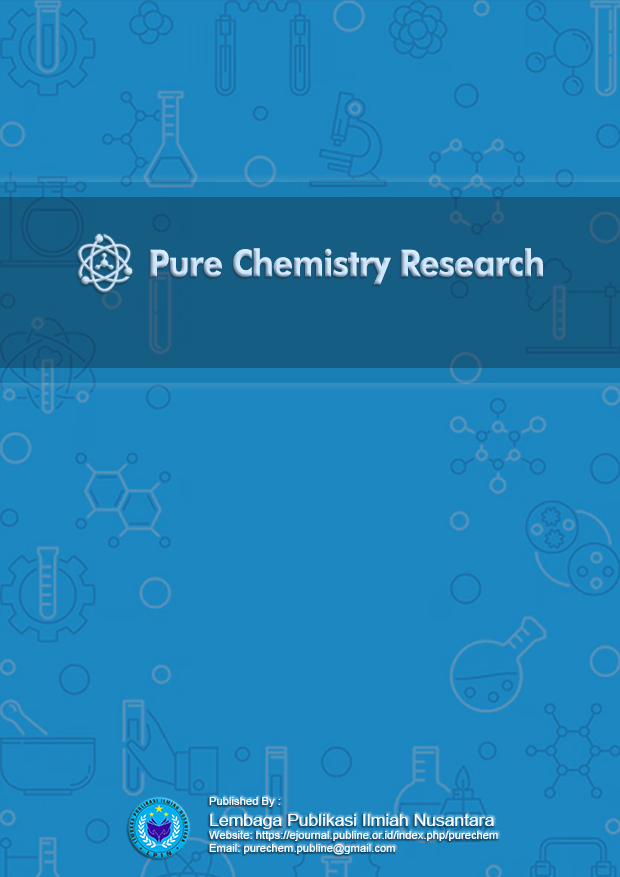Pemanfaatan Limbah Kulit Pisang sebagai Adsorben Alami untuk Menurunkan Kadar Logam Berat Pb(II) dalam Air
DOI:
https://doi.org/10.70716/purechem.v1i1.267Keywords:
banana peel waste, natural adsorbent, Pb(II), heavy metals, water pollutionAbstract
Water pollution caused by heavy metals such as lead [Pb(II)] has become a serious environmental issue due to its toxic, persistent, and bioaccumulative nature within the food chain. Various methods have been developed to reduce heavy metal concentrations in water, one of which is adsorption. This study aims to utilize banana peel waste as a natural adsorbent to decrease Pb(II) levels in contaminated water. Dried and ground banana peels were activated with an acid solution to enhance their adsorption capacity, and then applied to test solutions with variations in initial Pb(II) concentration, contact time, and adsorbent dosage. The results showed that banana peels exhibited a significant adsorption capacity for Pb(II) ions, with the highest removal efficiency obtained at an adsorbent dosage of 2 g/100 mL of solution and a contact time of 60 minutes. The adsorption mechanism is presumed to occur through interactions with functional groups such as –OH, –COOH, and –NH2 present in the cellulose, hemicellulose, and lignin structures of banana peels. These findings demonstrate that banana peel waste can serve as an eco-friendly, low-cost natural adsorbent for the treatment of heavy metal–contaminated water.
References
Annadurai, G., Juang, R. S., & Lee, D. J. (2002). Adsorption of heavy metals from water using banana and orange peels. Water Science and Technology, 47(1), 185–190. https://doi.org/10.2166/wst.2002.0015
Babel, S., & Kurniawan, T. A. (2003). Low-cost adsorbents for heavy metals uptake from contaminated water: A review. Journal of Hazardous Materials, 97(1–3), 219–243. https://doi.org/10.1016/S0304-3894(02)00263-7
Badan Pusat Statistik. (2020). Statistik tanaman buah-buahan dan sayuran tahunan Indonesia. BPS. https://www.bps.go.id
Foo, K. Y., & Hameed, B. H. (2010). Insights into the modeling of adsorption isotherm systems. Chemical Engineering Journal, 156(1), 2–10. https://doi.org/10.1016/j.cej.2009.09.013
Fu, F., & Wang, Q. (2011). Removal of heavy metal ions from wastewaters: A review. Journal of Environmental Management, 92(3), 407–418. https://doi.org/10.1016/j.jenvman.2010.11.011
Gupta, V. K., & Babu, A. N. (2009). Utilization of waste product activated carbons for the removal of dyes and heavy metals from aqueous solution. Journal of Environmental Management, 90(8), 2313–2342. https://doi.org/10.1016/j.jenvman.2008.11.017
Ho, Y. S., & McKay, G. (1999). Pseudo-second order model for sorption processes. Process Biochemistry, 34(5), 451–465. https://doi.org/10.1016/S0032-9592(98)00112-5
Hossain, M. A., Ngo, H. H., Guo, W. S., & Nguyen, T. V. (2012). Removal of copper from water by adsorption onto banana peel as bioadsorbent. International Journal of GEOMATE, 2(1), 227–234. https://doi.org/10.21660/2012.5.22774
Nawab, J., Khan, S., Khan, A., Ahmad, N., & Ali, S. (2016). Accumulation of heavy metals in soil and uptake by plant species in the vicinity of industrial areas of Peshawar, Pakistan. Soil and Sediment Contamination: An International Journal, 25(5), 582–593. https://doi.org/10.1080/15320383.2016.1185004
Simate, G. S., & Ndlovu, S. (2014). Acid mine drainage: Challenges and opportunities. Journal of Environmental Chemical Engineering, 2(3), 1785–1803. https://doi.org/10.1016/j.jece.2014.07.021
Suhendrayatna. (2001). Toksisitas logam berat: Dampaknya terhadap makhluk hidup. Banda Aceh: Universitas Syiah Kuala Press.
World Health Organization. (2017). Guidelines for drinking-water quality: Fourth edition incorporating the first addendum. WHO. https://www.who.int/publications/i/item/9789241549950
Downloads
Published
How to Cite
Issue
Section
License
Copyright (c) 2025 Muhamad Rifai, Azhar Hakiki, Linda Rositawati

This work is licensed under a Creative Commons Attribution-ShareAlike 4.0 International License.










